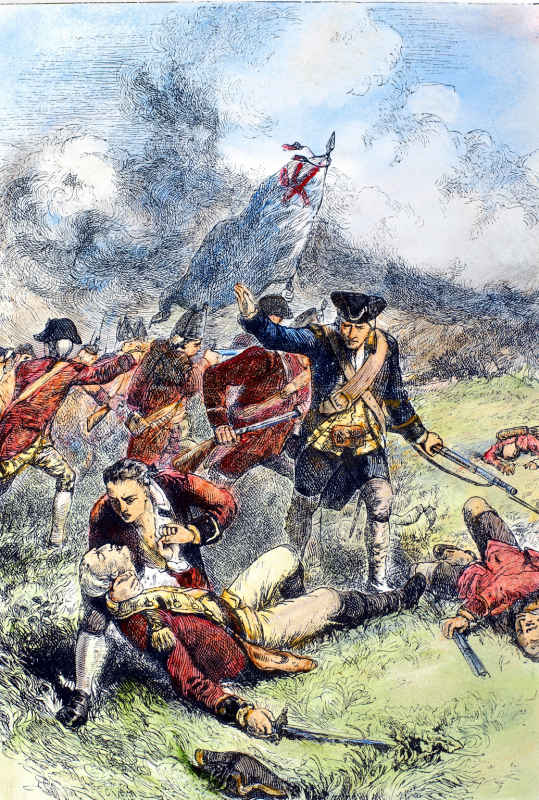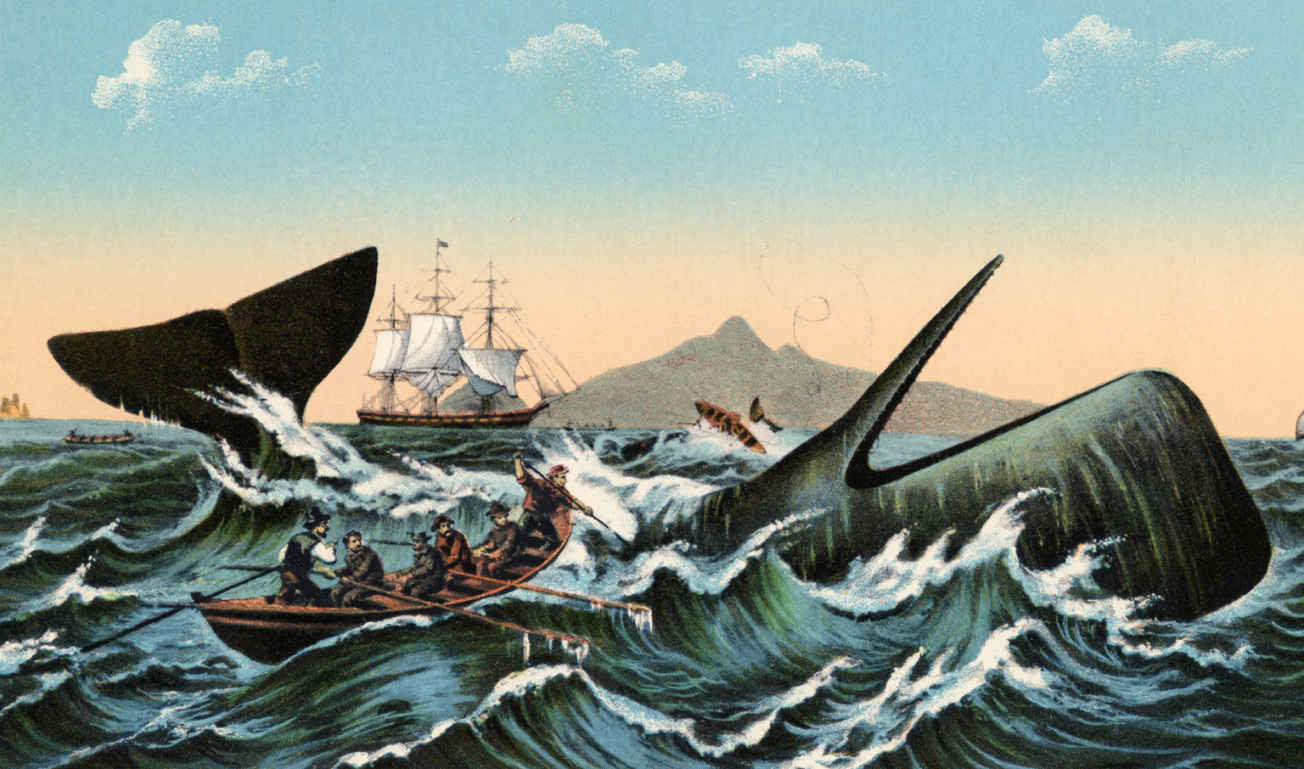MOMENTS IN HISTORY
1. 10000 BC–AD 1000: Settlement
As glaciers retreated from New England some 12,000 years ago, hunters moved in. By AD 1000, they lived in seasonal villages and farming augmented hunting and fishing. Most spoke an Algonkian language; their dialects persist on Native lands in Massachusetts, Maine, and Connecticut.
2. 1620: Colonization
Religious reformers from England swarmed into New England; first the Pilgrims at Plymouth, Massachusetts (1620), then Puritan colonies at Salem (1626) and Boston (1630). Soon communities were springing up in Rhode Island, Connecticut, and New Hampshire.
3. 1775: Revolution
Tensions between mother country and colonies came to a head in 1775 with the occupation of Boston. On April 19, British redcoats and American rebels exchanged fire in Lexington and Concord. Within weeks, the American Revolution had begun.

Painting depicting the Revolution
4. 1785: Trade with China
In 1785, merchants from Salem, Massachusetts, opened China to American trade. By 1845, shipbuilders in New England had developed the Yankee clipper, a swift sailing vessel that dominated the China trade well into the 1860s.
5. 1799–1821: Industrialization and Manufacturing
From 1799 to 1813, Eli Whitney’s Connecticut gun plants pioneered interchangeable parts and the assembly line. In 1821, textile entrepreneurs brought the Industrial Revolution to Lowell, Massachusetts, complete with purloined English loom designs and a factory-city scheme that was quickly replicated throughout the region.
6. 1820–60: Whaling Hegemony
In the 1700s, Nantucket Islanders were among the first to hunt whales around the globe. The whale-oil business proved immensely lucrative, justifying larger ships and longer voyages. New Bedford, Massachusetts, was the world capital of whaling from the 1820s until the 1960s, when petroleum displaced whale oil.

Whale hunting, New Bedford
7. 1861–5: Abolition and the Civil War
New England led the fight to abolish slavery in the United States. The region harbored fugitive slaves, and abolition societies flourished in both black and white communities. New Englanders volunteered in overwhelming numbers to fight for the Union in the Civil War (1861–5), which decimated many rural areas.
8. 1865–1900: The Gilded Age
In the late 19th century, great wealth was generated as railroads spanned the country, industry expanded exponentially, and immigrants flowed into the country to fill job openings.
9. 1890–1950: The Rise of Tourism
Railroad construction opened the mountains and coasts of New England to scenic tourism. After World War II, new highways and roadside motels brought multitudes of new visitors to Cape Cod, the Maine coast, and the White and Green Mountains.

The Conway railroad, White Mountains
10. 1960–Today: Education and the Knowledge Economy
The founding of Harvard College in 1636 is what gave New England a head start in higher education. The emphasis on scholarship has persisted down the years, and has produced industrial leaders in such fields as information technology, robotics, and biotechnology.


